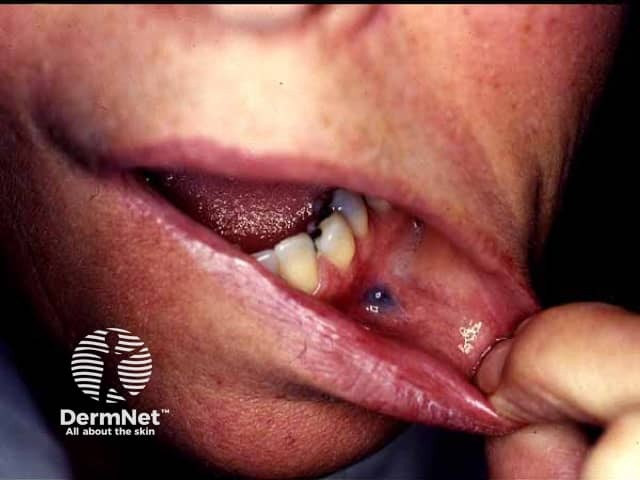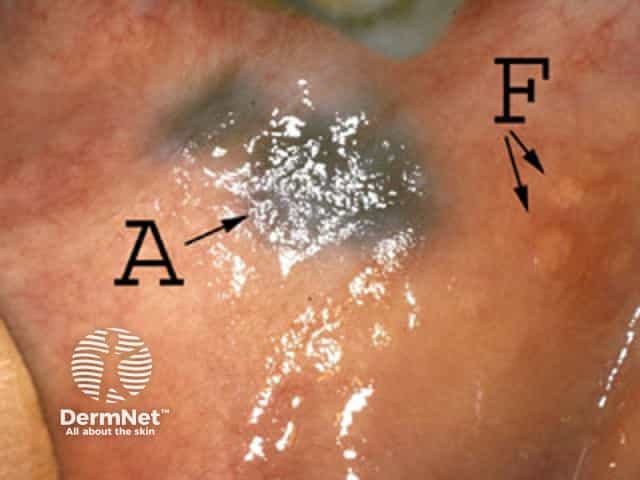Main menu
Common skin conditions

NEWS
Join DermNet PRO
Read more
Quick links
Author: Richeal Ni Riordain, dentist, London, and medical student at Barts and The London School School of Medicine and Dentristy. Chief Editor: A/Prof Amanda Oakley, Hamilton, New Zealand. Copy Editor: Clare Morrison. June 2014.
Introduction Demographics Causes Clinical features Diagnosis Treatment
An amalgam tattoo refers to a blue, black or slate grey coloured lesion found in the mouth. An amalgam tattoo most commonly occurs on the gum near an amalgam filling but can occur anywhere in the mouth.
Amalgam is an alloy, or mixture of metals, consisting of mercury, silver, tin and copper. It has been used as a filling material in dentistry for over 150 years[1]. Amalgam fillings are sometimes known as "silver fillings" due to their silver coloured appearance.
People who have amalgam fillings, have had amalgam fillings replaced or who have had a procedure called an apicoectomy (where the tip of the root of a tooth is removed, the area cleaned and a filling is placed in the root), may have an amalgam tattoo.
An amalgam tattoo develops when a piece of amalgam filling material becomes inadvertently lodged in the oral mucosa. This can happen whilst the fillings are being placed or polished, or during the removal of a filling following the use of the dental drills.
An amalgam tattoo presents as a blue, black or slate grey macule on the oral mucosa. They are commonly found on the gum near a tooth with an amalgam filling; however, they have been discovered on the roof of the mouth, inside of the cheeks and on the tongue.

Amalgam tattoo

Amalgam tattoo
An amalgam tattoo can be diagnosed clinically, especially when it is seen adjacent to an amalgam filling. Sometimes an x-ray may be useful, but only if large particles of amalgam are present that will actually show on x-ray. A biopsy may also be used in diagnosing an amalgam tattoo if there is any doubt regarding the exact diagnosis.
As amalgam tattoos are harmless and cause no symptoms, no treatment is required.